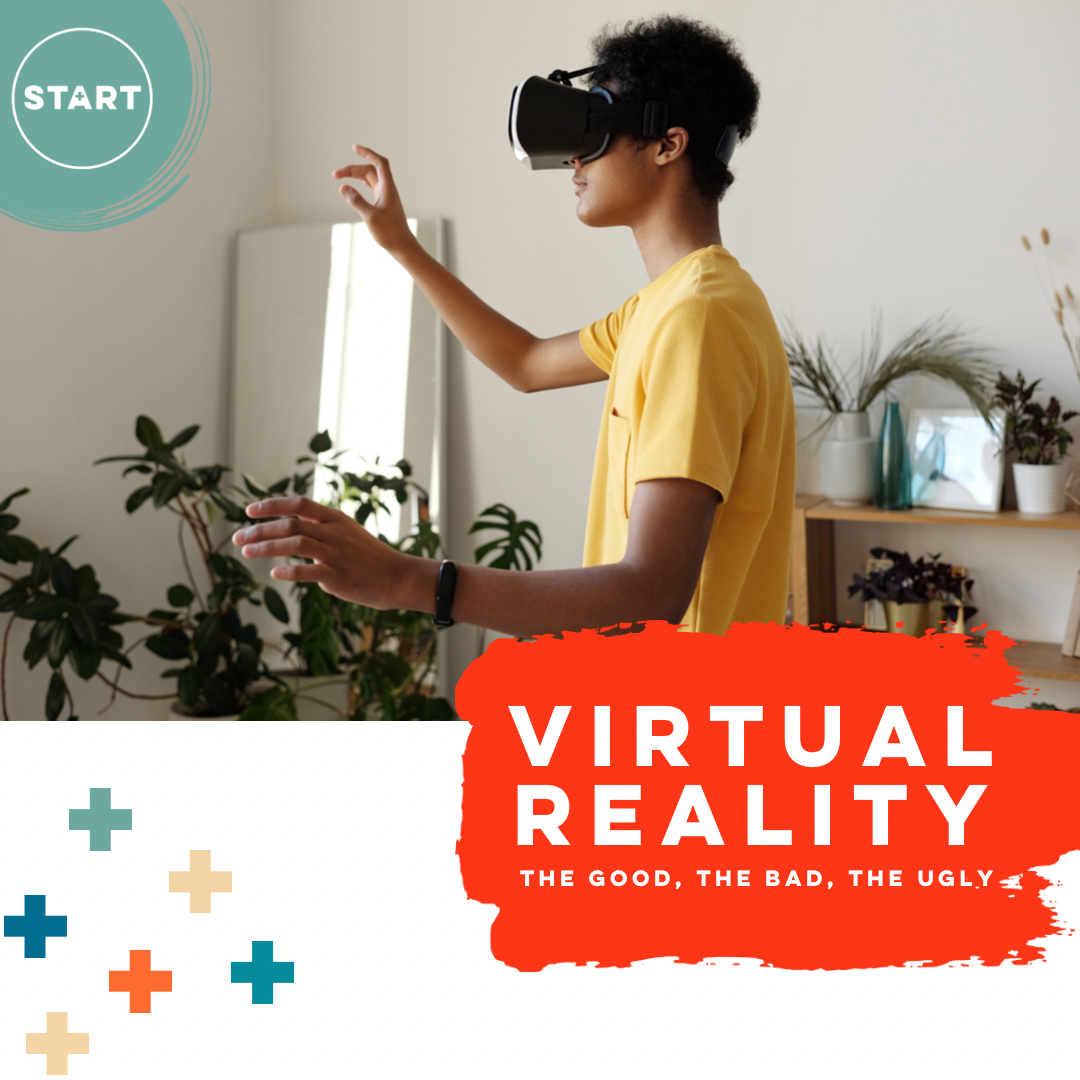
What is Virtual Reality or VR?
Virtual reality uses technology to create a simulated world or experience, typically through the use of a headset that provides a 180- or 360-degree view. It is an immersive experience, making the user feel as if they are truly inside a virtual world.
The number one downloaded app on Christmas Day in 2021 was the Oculus virtual reality app, powered by Metaverse (formerly Facebook). Other companies with their hats in the ring include HTC, Samsung and Microsoft, among many others. These Big Tech players will shape the future of virtual reality.
Mark Zuckerberg says, “instead of just viewing content — you are in it.”
For adults, that could mean you begin your day attending work meetings virtually, complete with an avatar resembling you (or not!) and a fully furnished conference room. Then, in the afternoon, you take a tour of the Mayan ruins, reaching out to almost touch the crumbling rock in front of you. For children, VR could include placing themselves inside their favorite video game or attending a virtual dance party with avatar versions of real people. The possibilities are endless…and a little scary.
There are many aspects of virtual reality that feed connection and adventure, but there are also some serious concerns around security and impact on the development of kids.
Most VR platforms communicate that their technology is not made for kids under 13 years old. Some of the most popular virtual reality platforms offer no parental controls at all. Without these options in place, kids are exposed to all kinds of unsafe content, including violence and pornography. The Center for Countering Digital Hate shared that users (including kids) are exposed to abusive behavior every seven minutes on the Metaverse virtual reality platform.
Outside of obvious concerns about what kids may be exposed to, there is also a lack of information about how virtual reality can affect developing brains and vision. Young children may have a more difficult time discerning what is real and what exists in the virtual world.
There is no perfect answer yet on how to make virtual reality safe for your kids. Large tech companies are being called upon to improve safety as virtual reality gains popularity and children join the population of users. Here are a few things you can do in the meantime:
Purchase gear with parental controls. Sony’s Play Station VR has parental controls, while Oculus, Vine and Index do not.
Set a password to lock the device so you can monitor its use.
Use the casting feature to watch kids’ virtual world in real time on your device.
Create boundaries on downloading apps. Research and try new apps yourself before allowing kids to use.
Remind your kids not to talk to, or interact with, strangers in VR.